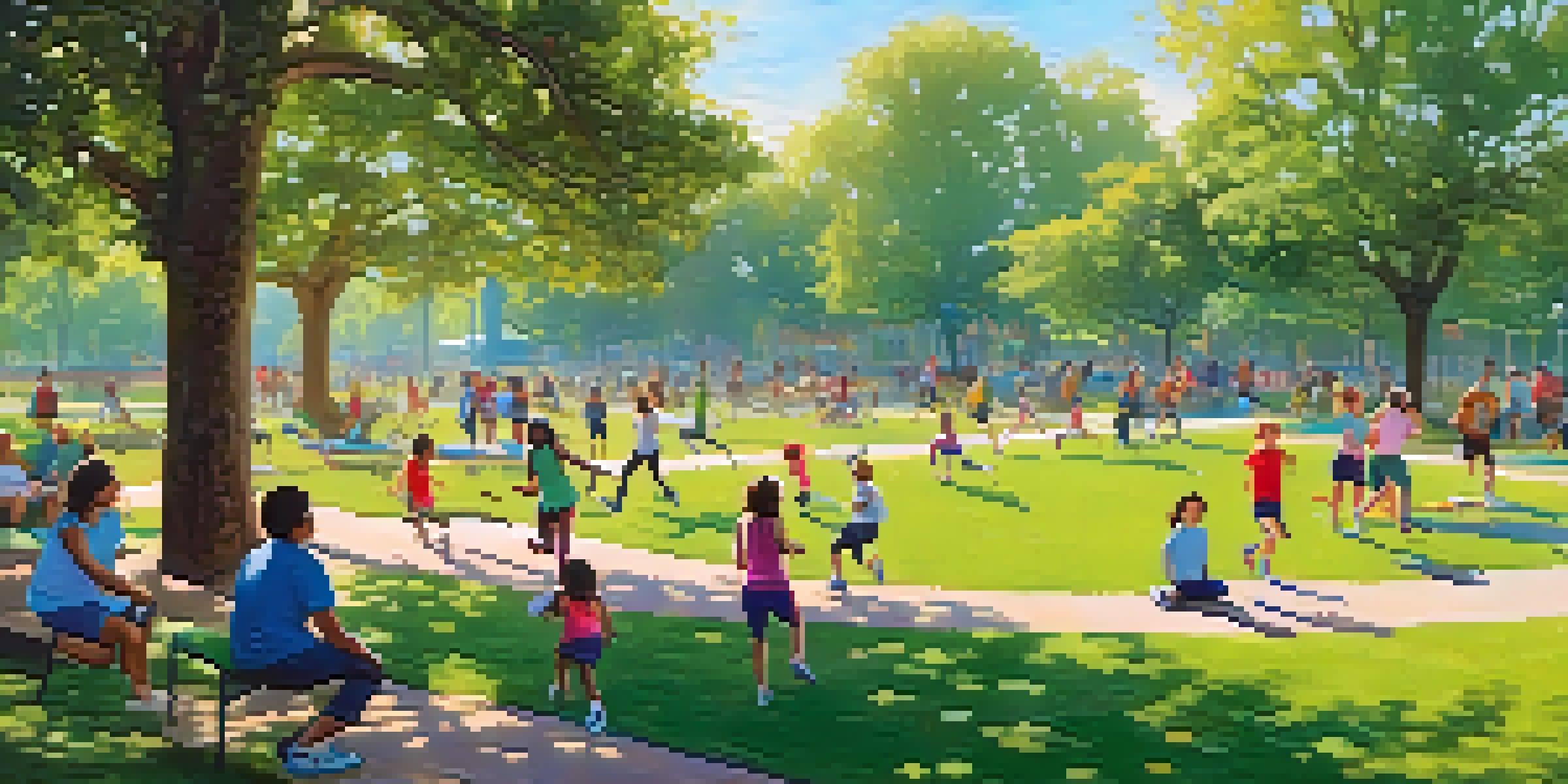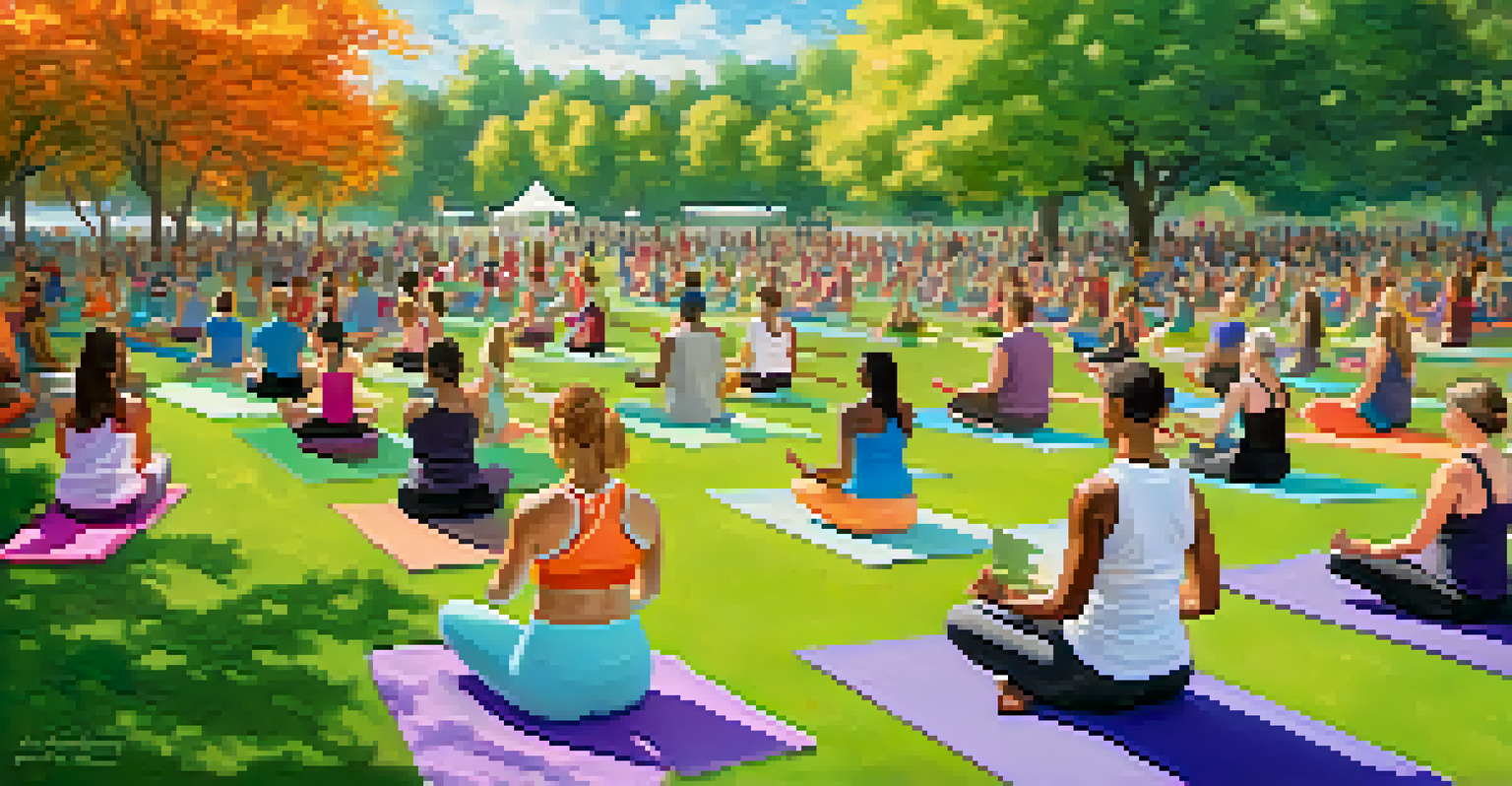Disparities in Access to Physical Activity Resources

What Are Physical Activity Resources and Why They Matter
Physical activity resources encompass a variety of facilities and programs, such as parks, gyms, community centers, and organized sports. These resources are essential for promoting health and well-being, facilitating regular exercise, and encouraging social interaction. Access to these resources can significantly influence an individual's ability to engage in physical activity, leading to a healthier lifestyle.
Physical activity is essential to a healthy lifestyle. The environment in which we live can either promote or hinder our ability to engage in physical activity.
When people have access to safe spaces for exercise, they are more likely to meet the recommended levels of physical activity. Conversely, limited access can create barriers, making it difficult for individuals to stay active and maintain their physical health. In essence, the availability of these resources directly correlates with community health outcomes.
Understanding what constitutes physical activity resources is the first step in addressing disparities. It allows us to identify gaps in availability, which can vary significantly between urban and rural areas, as well as among different socioeconomic groups.
Identifying Disparities in Access to Resources
Disparities in access to physical activity resources are often influenced by socioeconomic status, geography, and race. For example, low-income neighborhoods may lack parks or recreational facilities, making it harder for residents to engage in physical activities. This geographic disparity can lead to a cycle of inactivity and health issues, particularly in communities already facing numerous challenges.

Studies have shown that communities with higher poverty rates frequently have fewer resources dedicated to physical activity. This lack of access can exacerbate health disparities, leading to higher rates of obesity, diabetes, and other lifestyle-related diseases. Essentially, the environment shapes the opportunities available for physical activity.
Access to Resources Impacts Health
Availability of physical activity resources directly influences community health outcomes, with limited access leading to higher rates of chronic illnesses.
Recognizing these disparities is crucial for developing targeted interventions that can help bridge the gap. By addressing these inequalities, communities can create a more supportive environment for all individuals to engage in physical activity.
The Role of Community Planning and Urban Design
Community planning plays a vital role in determining the availability of physical activity resources. Thoughtful urban design can promote physical activity by incorporating parks, walking trails, and bike lanes into neighborhoods. These elements not only provide opportunities for exercise but also enhance the overall quality of life for residents.
The greatest wealth is health. When communities invest in physical activity resources, they invest in the future of their residents.
Unfortunately, many communities fail to prioritize these aspects in their development plans. As a result, certain areas become 'food deserts' or 'activity deserts,' where access to healthy food options and exercise facilities is severely limited. This can lead to a disconnect between community needs and available resources.
By advocating for better urban design and community planning, residents can influence the development of more inclusive spaces that promote physical activity. Engaging in local planning discussions can empower communities to take charge of their health and well-being.
Barriers to Access: Economic and Social Factors
Economic factors can significantly impact access to physical activity resources. For instance, gym memberships, sports fees, and transportation costs can create financial barriers that prevent individuals from participating in physical activities. This is especially true in low-income communities where disposable income is limited.
Social factors also play a role; cultural norms and community support can influence an individual's likelihood of engaging in physical activity. In some cases, individuals may feel discouraged from participating due to a lack of representation or support in organized sports or fitness programs. These social dynamics can further entrench disparities.
Disparities Affect Community Wellness
Socioeconomic status, geography, and race contribute to unequal access to physical activity resources, exacerbating health disparities in underserved communities.
Addressing both economic and social barriers requires a multi-faceted approach. Initiatives that provide free or low-cost resources and foster inclusive environments can help mitigate these challenges and promote more equitable access to physical activity.
Health Outcomes Linked to Physical Activity Disparities
The disparities in access to physical activity resources directly correlate with various health outcomes. Communities with limited access often experience higher rates of chronic illnesses such as obesity, heart disease, and diabetes. This creates a cyclical pattern where poor health further restricts access to resources, perpetuating the issue.
Moreover, mental health can also be adversely affected by physical inactivity. Regular physical activity is known to improve mood, reduce anxiety, and enhance overall mental well-being. In communities where access is limited, individuals may miss out on these benefits, leading to a broader impact on community health.
By acknowledging the link between access to physical activity resources and health outcomes, stakeholders can better advocate for policies and initiatives aimed at improving accessibility. This understanding is crucial for fostering healthier communities.
Successful Initiatives to Improve Access
Several successful initiatives have emerged to address disparities in access to physical activity resources. For instance, community-led projects that create pop-up parks or temporary sports facilities can provide immediate access to physical activity in underserved areas. These initiatives often rely on local volunteers and community engagement to ensure their sustainability.
Another effective approach is the development of partnerships between local governments and non-profit organizations. These collaborations can lead to improved funding and resources for community programs that promote physical activity, such as youth sports leagues or fitness classes. By pooling resources, communities can create more robust offerings.
Advocacy Drives Policy Changes
Collective advocacy efforts can lead to meaningful policy changes that prioritize equitable access to physical activity resources for all individuals.
Highlighting these successful initiatives serves as an inspiration for other communities facing similar challenges. Sharing best practices can help foster a culture of collaboration and innovation in promoting access to physical activity.
The Importance of Advocacy and Policy Change
Advocacy plays a critical role in addressing disparities in access to physical activity resources. Community members, health professionals, and policymakers must work together to identify gaps and push for equitable access. This collective effort can lead to meaningful policy changes that prioritize health and wellness for all individuals.
Policy changes may include increasing funding for public parks, improving public transportation to recreational facilities, or creating incentives for businesses to provide free or reduced-cost activities. By advocating for these changes, communities can create a more supportive environment for physical activity.

Ultimately, the push for advocacy must come from the grassroots level, ensuring that the voices of those most affected by disparities are heard. Empowering individuals to speak out can lead to substantial improvements in access to physical activity resources.